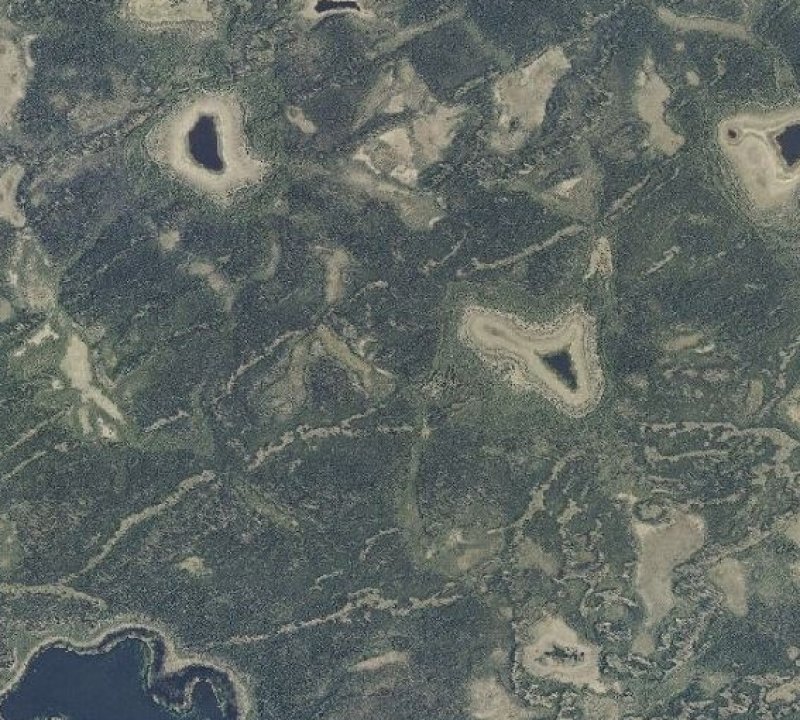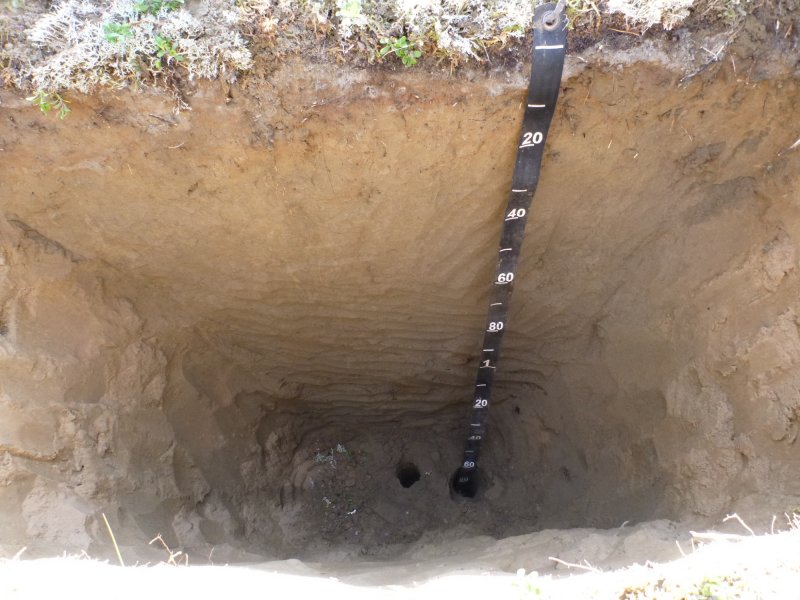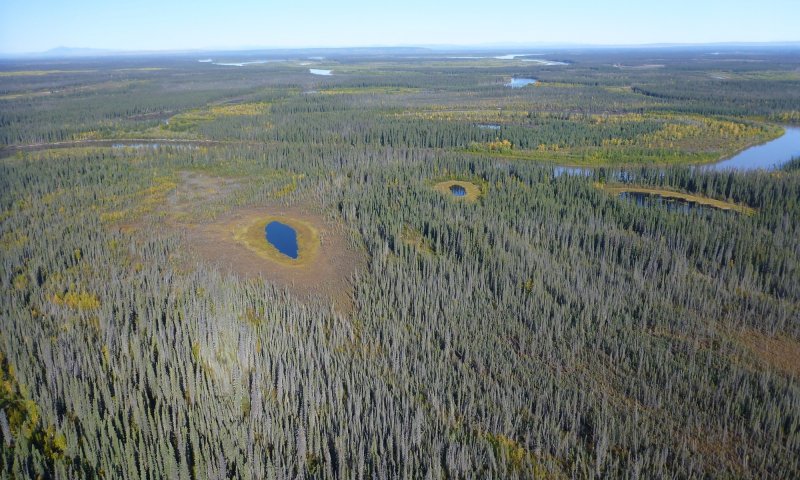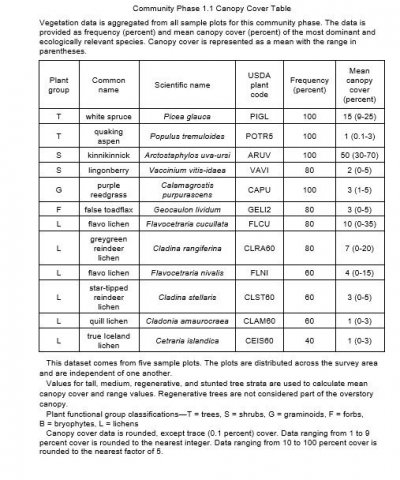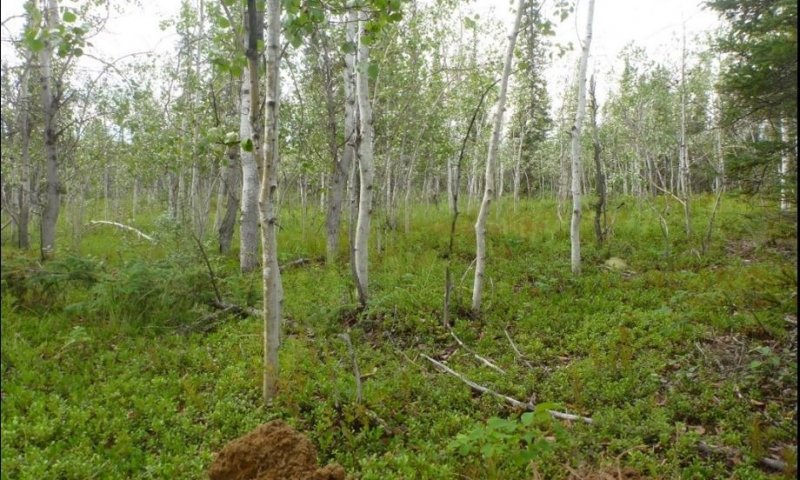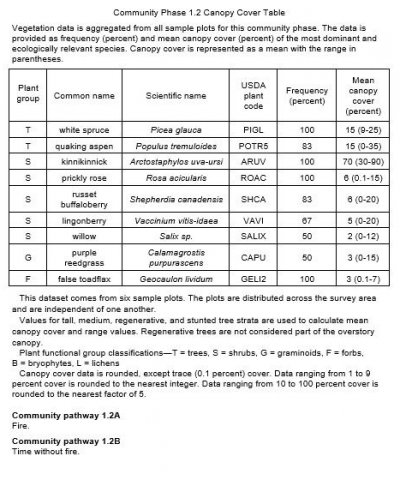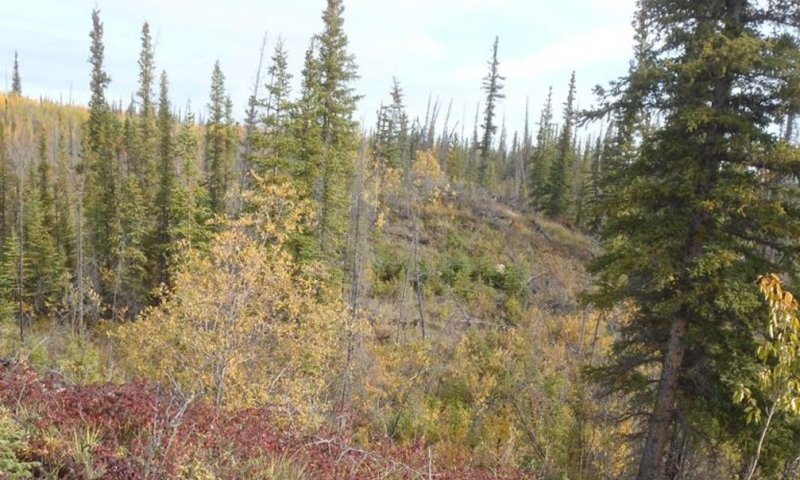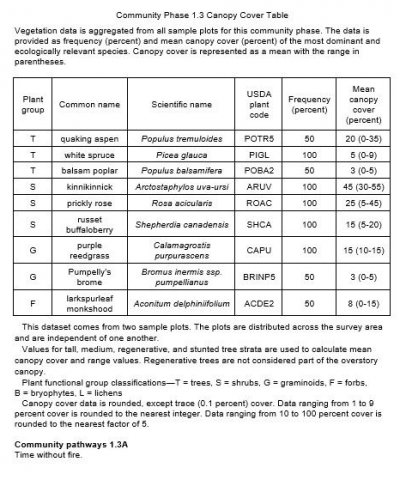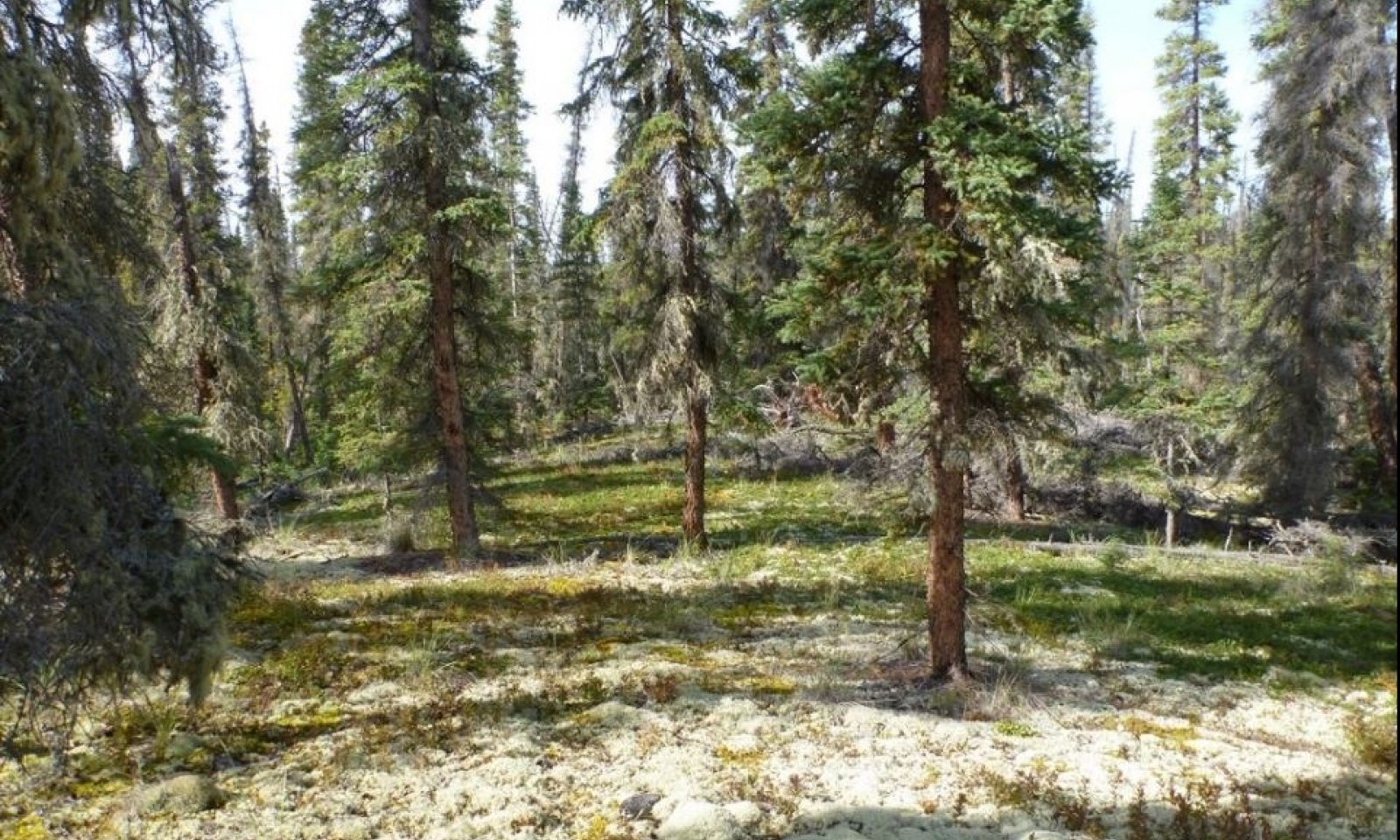

Natural Resources
Conservation Service
Ecological site XA232X01Y224
Boreal Woodland Sandy Terrace Rises
Last updated: 5/18/2020
Accessed: 12/21/2025
General information
Provisional. A provisional ecological site description has undergone quality control and quality assurance review. It contains a working state and transition model and enough information to identify the ecological site.
MLRA notes
Major Land Resource Area (MLRA): 232X–Yukon Flats Lowlands
The Yukon Flats Lowlands MLRA is an expansive basin characterized by numerous levels of flood plains and terraces that are separated by minimal breaks in elevation. This MLRA is in Interior Alaska and is adjacent to the middle reaches of the Yukon River. Numerous tributaries of the Yukon River are within the Yukon Flats Lowlands MLRA. The largest are Beaver Creek, Birch Creek, Black River, Chandalar River, Christian River, Dall River, Hadweenzic River, Hodzana River, Porcupine River, and Sheenjek River. The MLRA has two distinct LRU—lowlands and marginal uplands. The lowlands have minimal local relief and are approximately 9,000 square miles in size (Williams 1962). Landforms associated with the lowlands are flood plains and stream terraces. The marginal uplands consist of rolling and dissected plains that are a transitional area between the lowlands and adjacent mountain systems. The marginal uplands are approximately 4,700 square miles in size (Williams 1962).
This MLRA is bounded by the Yukon-Tanana Plateau to the south, Hodzana Highlands to the west, Porcupine Plateau to the east, and southern foothills of the Brooks Range to the north (Williams 1962). These surrounding hills and mountains partially isolate the Yukon Flats Lowlands MLRA from weather systems affecting other MLRAs of Interior Alaska. As a result, temperatures are generally warmer in summer and colder in winter than is characteristic in other areas at comparable latitude. There is a moisture and temperature gradient in which the lowlands region tends to be drier and colder and the surrounding marginal uplands region tends to be moister and warmer (PRISM Climate Group 2006).
The Yukon Flats Lowlands MLRA is mostly undeveloped lands that are sparsely populated and not accessible by a road system. A number of villages, including Beaver, Birch Creek, Chalkyitsik, Circle, Fort Yukon, Stevens Village, and Venetie, are adjacent to the Yukon River or one of its major tributaries. The largest village is Fort Yukon, which according to the 2010 U.S. Census has 583 residents that are dominantly Gwich’in Alaska Natives.
LRU notes
Alaska has no officially recognized LRU. However, there appear to be two distinct LRU in the Yukon Flats Lowlands MLRA. These LRU are thought to have differing climatic regimes, landforms, and soil types (STATSGO and Jorgensen and Meidinger 2015). The two LRU were previously discussed in the MLRA notes section above and are termed the lowlands LRU and the marginal uplands LRU.
This ecological site is associated with the lowlands LRU.
Classification relationships
Yukon Flats Lowlands MLRA.
Ecological site concept
This ecological site is associated with dunes on stream terraces in the Yukon Flats Lowlands MLRA. The dunes were formed by deposition of windblown sand and silt. Because of the convex slope shape and sandy texture of dunes, associated soils are well to somewhat excessively drained. This impacts the growth and productivity of associated plant species. Fieldwork and aerial/satellite reconnaissance have yet to result in the positive identification of barren and/or actively moving dunes. All dunes observed, even those recently burned, have minimal exposed bare soil and are considered stable and vegetated.
Reference plant community 1.1 is characterized as a needleleaf woodland (10 to 25 percent cover; Viereck et al. 1992) composed primarily of mature white spruce (Picea glauca). Commonly observed understory species include kinnikinnick (Arctostaphylos uva-ursi), lingonberry (Vaccinium vitis-idaea), purple reedgrass (Calamagrostis purpurascens), false toadflax (Geocaulon lividum), flavo lichen (Flavocetraria cucullata), grey reindeer lichen (Cladina rangiferina), star-tipped reindeer lichen (Cladina stellaris), and mixed cup lichen (Cladonia spp.).
Associated sites
| XA232X01Y229 |
Boreal Scrub Loamy Terrace Swales This ecological site is associated with swales on stream terraces in lowlands region of the Yukon Flats Lowlands MLRA. Associated soils are considered very poorly drained. The reference plant community is characterized as open tall scrub (Viereck et al. 1992) and the dominant shrubs are willow (Salix spp.) and shrub birch (Betula glandulosa). |
|---|---|
| XA232X01Y221 |
Boreal Forest Loamy Terraces This ecological site is associated with moderately well to well drained soils on the tread of stream terraces in the Yukon Flats Lowlands MLRA. Flooding frequency ranges from rare to none. The reference plant community is characterized as an open needleleaf forest (25 to 60 percent cover) primarily composed of mature white spruce (Picea glauca). |
| XA232X01Y222 |
Boreal Graminoid Loamy Terrace Depressions This ecological site is associated with closed depressions of stream terraces that support a reference state with multiple graminoid-dominant community phases. These depressions are considered closed because they are not associated with a flood regime and have limited, if any, groundwater flow or recharge. The presumed hydrological inputs for this ecological site are primarily thaw of the annual active soil layer and/or permafrost, snowmelt runoff, and precipitation. This hydrologic regime results in the development of sodic soil properties. |
| XA232X01Y223 |
Boreal Scrub Loamy Frozen Terrace Depressions This shrubby ecological site occurs in the transitional area between the forested tread of a stream terrace and the graminoid-dominant communities associated with closed, terrace depressions (ecological site R232XY222AK). This site typically occurs between the outer third and lip of these closed depressions. The reference plant community for ecological site is characterized as an open tall scrubland (Viereck et al. 1992) and those shrubs are primarily an assortment of willow (Salix spp.). |
| XA232X01Y218 |
Boreal Woodland Loamy Frozen Terraces This ecological site is associated with wet soils on the tread of stream terraces in Yukon Flats Lowlands MLRA. Soils generally have permafrost at moderate depth (20 to 40 inches) and pond occasionally for long durations of time. The reference plant community is characterized as a needleleaf woodland (10 to 25 percent cover; Viereck et al. 1992) composed of black spruce (Picea mariana) and white spruce (Picea glauca). |
| XA232X01Y219 |
Boreal Forest Loamy Terraces Moist This ecological site is associated with somewhat poorly to moderately well drained soils on the treads of stream terraces in the Yukon Flats Lowlands MLRA. Flooding frequency ranges from rare to none. The reference plant community is characterized as an open needleleaf forest (25 to 60 percent cover) primarily composed of mature white spruce (Picea glauca). |
Similar sites
| XA232X01Y250 |
Boreal Woodland Gravelly Terraces Dry Ecological site XA232X01Y250 is associated with somewhat excessively drained soils with gravelly horizons at very shallow depths. Sites XA232X01Y250 and XA232X01Y224 have similar reference plant communities, but site XA232X01Y250 generally has less tree cover and more foliose and fruticose lichen cover. |
|---|
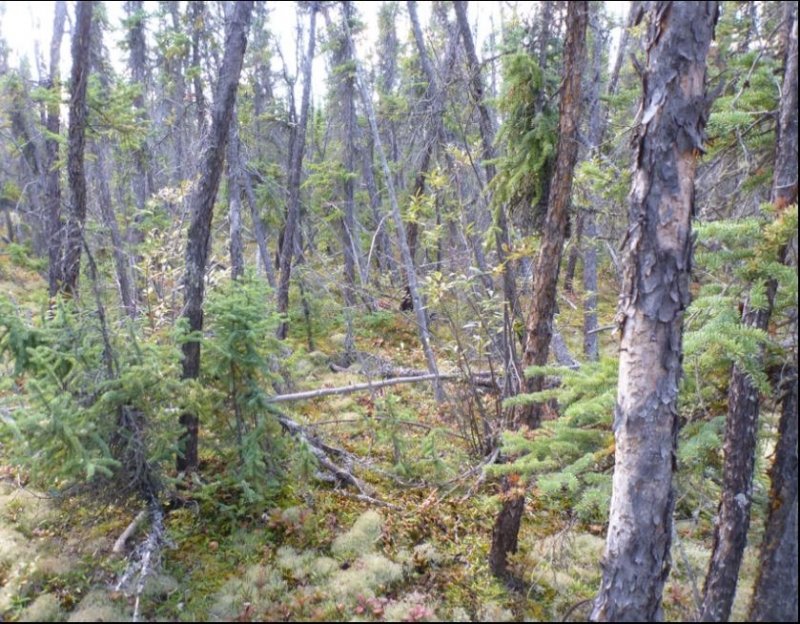
Figure 1. Typical interdune plant community (ecological site XA232X01Y218). As compared to soils on dunes, interdune soils are wetter and commonly have permafrost.
Table 1. Dominant plant species
| Tree |
(1) Picea glauca |
|---|---|
| Shrub |
(1) Arctostaphylos uva-ursi |
| Herbaceous |
(1) Flavocetraria cucullata |
Legacy ID
F232XY224AK
Click on box and path labels to scroll to the respective text.
